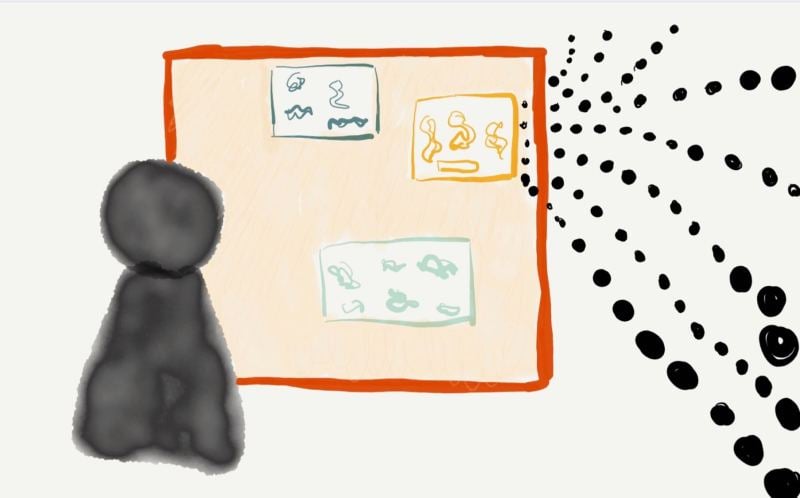A little girl stares at me with her watery eyes. Dirt covers her malnourished face. Behind her, fragile tarp tents stand one by one with breathless distance, creating endless chains that seem to reach to the horizon.
This is a pop-up fundraising advertisement for a Syrian refugee camp. One year ago, I volunteered at a Syrian refugee community in Istanbul, Turkey. Visiting refugee families household by household and listening to stories of how and why they make their decisions, I realized my previous impressions of refugees acquired from the news with threatening headlines or charity webpage with sensational figures are all far from reality. After I came back from Turkey, I started doing research related to ethics behind refugee advocacy, specifically focusing on visual representation. After months of paying frequent visits to humanitarian and human rights websites for research purposes, advertisements for charities such as the International Rescue Committee and CARE are all over my webpages.
These charities are taking up admirable levels of responsibility, but the situations they are trying to mitigate are far more complicated than the scenes of somber children on my browser screen. Charity advertisements like the one mentioned above, which mostly depict women and children, disproportionately represent refugee groups and over-victimize the refugee population. But recognizing the ethical flaws behind these fundraisers’ advertisements doesn’t prevent me from being susceptible to them.
According to UNHCR, there are 79.5 million displaced people as of 2020 and they are hugely impacted by economic and information precarity. Yet it’s only when images of suffering children are delivered to my eyes that I truly feel the weight of those numbers and words.
Here is what scares me. How come a single image brings more emotional appeal than statistics that are way more holistic?
A social experiment presented in Poor Economics, by the 2019 winners of the Nobel Prize in Economics Abhijit V. Banerjee and Esther Duflo suggests people are likely to donate more when they see flyers of specific individuals rather than statistics. In many cases, we accept pictures are more powerful than texts, and we gravitate towards using visual representations to help us convey messages.
This phenomenon is why many charity fundraisers use images of refugees as a tool to appeal to the public even though it comes with grave costs. Victimized refugee images silence the refugees. They are isolated, stigmatized, and profiled. Yet people donate more when the presentation of individual sufferings stir their compassions.
In this digital world, we are constantly fed with images and video clips that potentially deprive our imaginations. I feel when we overly rely on visual representations, our ability to visualize textual information weakens. Inundated with attention-grabbing visual cues on our phone and laptop screens, we are programmed to only process what is visually represented and ignore what is not.
We say “a picture is worth a thousand words” while a picture also takes away our ability to process the thousands of words behind it –– it does it for us. This summer I found myself repeatedly asking the question if the subliminal “seeing is believing” messaging of these charity advertisements is indeed eroding my ability to trust the credibility of things left unseen.
This is dangerous when a crisis like the COVID pandemic hits. Back in March when the pandemic started to surge in the U.S., I heard too many conversations broaching COVID with disbelief –– “I don’t see anybody die, so where’s the pandemic?”
I had doubts too –– when I wake up in the morning and see the bright sun shining, sometimes I wonder if this world-wide pandemic ever exists. It scares me that I have an illusion like this. While I am blessed to be able to think this way, I feel my compassion is deprived.
This reminds me of The Plague, a timeless novel written by Albert Camus in 1947 that sees through humanity from a pandemic. He writes “a dead man has no substance unless one has actually seen him dead, a hundred million corpses broadcast through history are no more than a puff of smoke in the imagination.” At a time like this, I very much need the imagination to transform the number of infected people into numerous faces and recognize the families tied to these people; I need the empathy to feel the hardship of others. And this process is summed up in one word: compassion.
In 2020, I can find myself in The Plague.
Contact Annie Li at Ali21 ‘at’ thehill.org.
